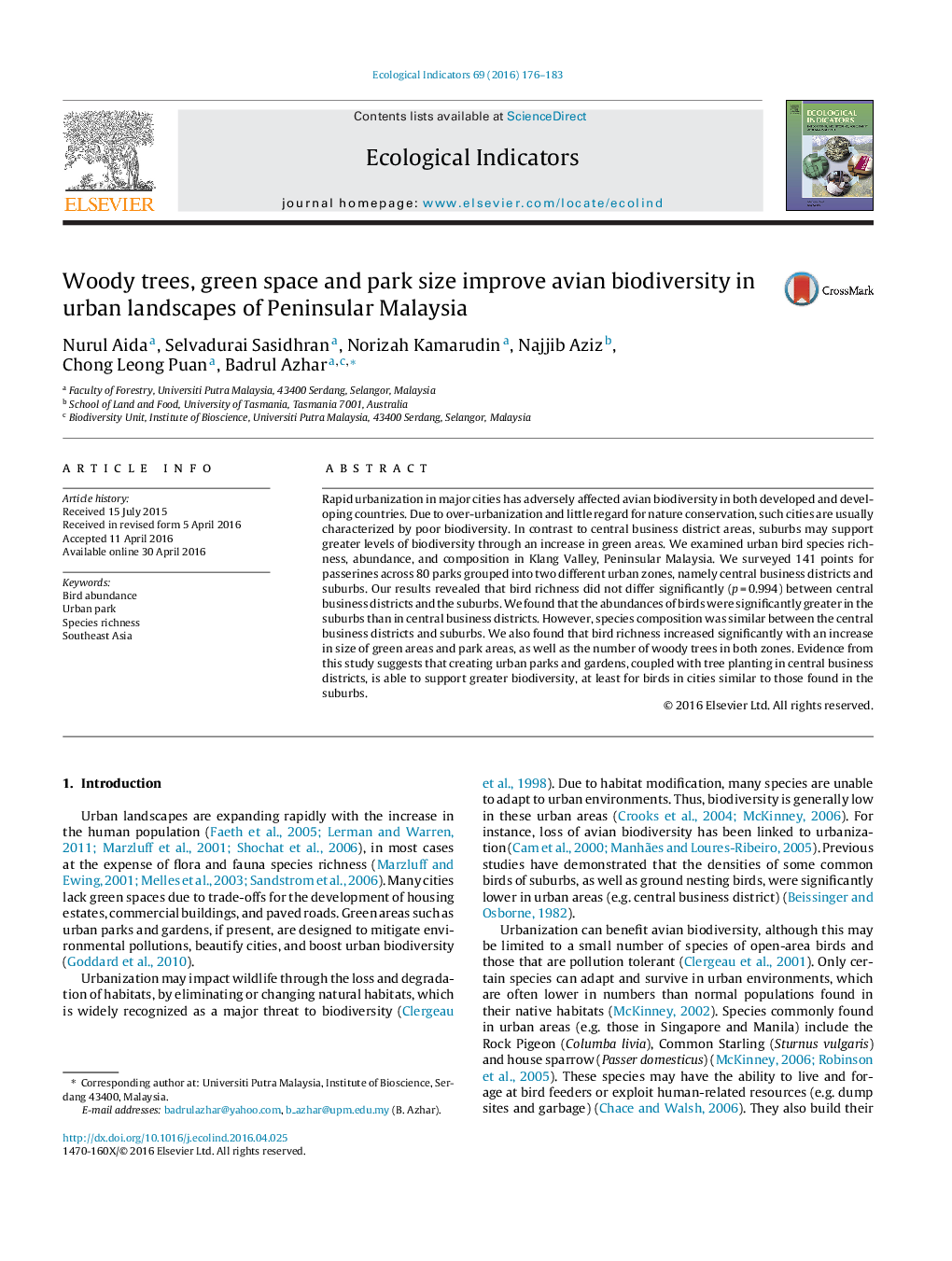| Article ID | Journal | Published Year | Pages | File Type |
|---|---|---|---|---|
| 6293205 | Ecological Indicators | 2016 | 8 Pages |
â¢Central business districts and suburbs shared similar bird richness.â¢Bird abundance was greater in suburbs than in central business districts.â¢Tree DBH, palm abundance, green space and park area influenced bird assemblages.â¢Creating urban parks can improve biodiversity in central business districts.
Rapid urbanization in major cities has adversely affected avian biodiversity in both developed and developing countries. Due to over-urbanization and little regard for nature conservation, such cities are usually characterized by poor biodiversity. In contrast to central business district areas, suburbs may support greater levels of biodiversity through an increase in green areas. We examined urban bird species richness, abundance, and composition in Klang Valley, Peninsular Malaysia. We surveyed 141 points for passerines across 80 parks grouped into two different urban zones, namely central business districts and suburbs. Our results revealed that bird richness did not differ significantly (p = 0.994) between central business districts and the suburbs. We found that the abundances of birds were significantly greater in the suburbs than in central business districts. However, species composition was similar between the central business districts and suburbs. We also found that bird richness increased significantly with an increase in size of green areas and park areas, as well as the number of woody trees in both zones. Evidence from this study suggests that creating urban parks and gardens, coupled with tree planting in central business districts, is able to support greater biodiversity, at least for birds in cities similar to those found in the suburbs.
